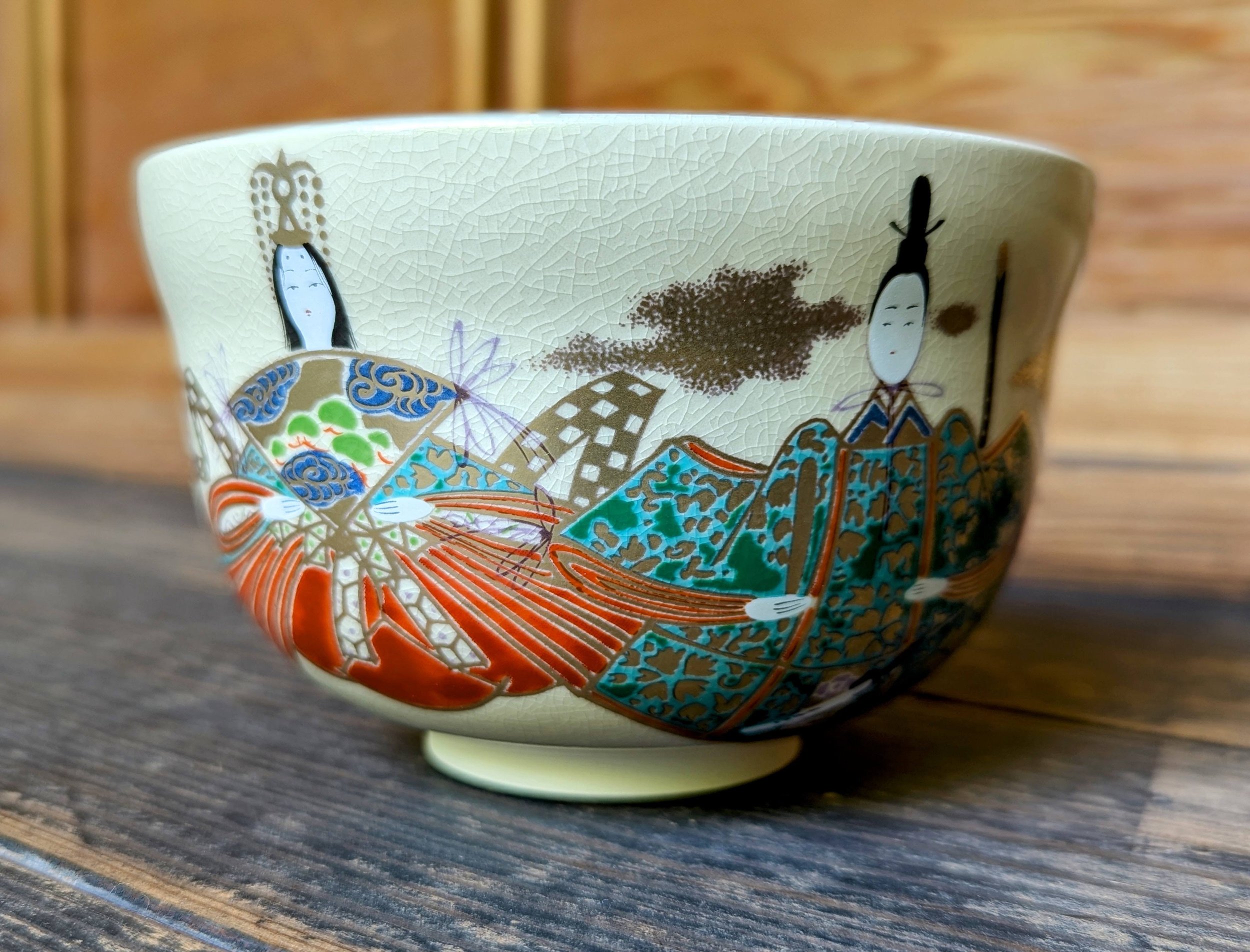 Image 1 of 6
Image 1 of 6

 Image 2 of 6
Image 2 of 6

 Image 3 of 6
Image 3 of 6

 Image 4 of 6
Image 4 of 6

 Image 5 of 6
Image 5 of 6

 Image 6 of 6
Image 6 of 6







Hina Ningyo (Japanese doll) Tea Bowl - Kyoto Ninsei Style
March 3rd is "Doll's Day" or "Girl's Day" in Japan. In the lead up to the celebration families with daughters display sets of dolls as pray for health and success in life. Some of these sets can be incredibly elabourate, but at the heart of each display is a female and male doll (emperor and empress).
Although these celebrations are mostly unknown outside of Japan, this tea bowl would be the perfect gift.
This is a Ninsei style tea bowl.
Ninsei (仁清) was a Japanese potter, who lived in the Edo Period, roughly between the 1640s to the 1690s. He is often credited as one of the key founders and influencers of 'Kyō ware', a type of Japanese pottery traditionally from Kyoto. He perfected colourful painted pottery.
Dimensions: w12.5cm x d12.5cm x h7.5cm
March 3rd is "Doll's Day" or "Girl's Day" in Japan. In the lead up to the celebration families with daughters display sets of dolls as pray for health and success in life. Some of these sets can be incredibly elabourate, but at the heart of each display is a female and male doll (emperor and empress).
Although these celebrations are mostly unknown outside of Japan, this tea bowl would be the perfect gift.
This is a Ninsei style tea bowl.
Ninsei (仁清) was a Japanese potter, who lived in the Edo Period, roughly between the 1640s to the 1690s. He is often credited as one of the key founders and influencers of 'Kyō ware', a type of Japanese pottery traditionally from Kyoto. He perfected colourful painted pottery.
Dimensions: w12.5cm x d12.5cm x h7.5cm